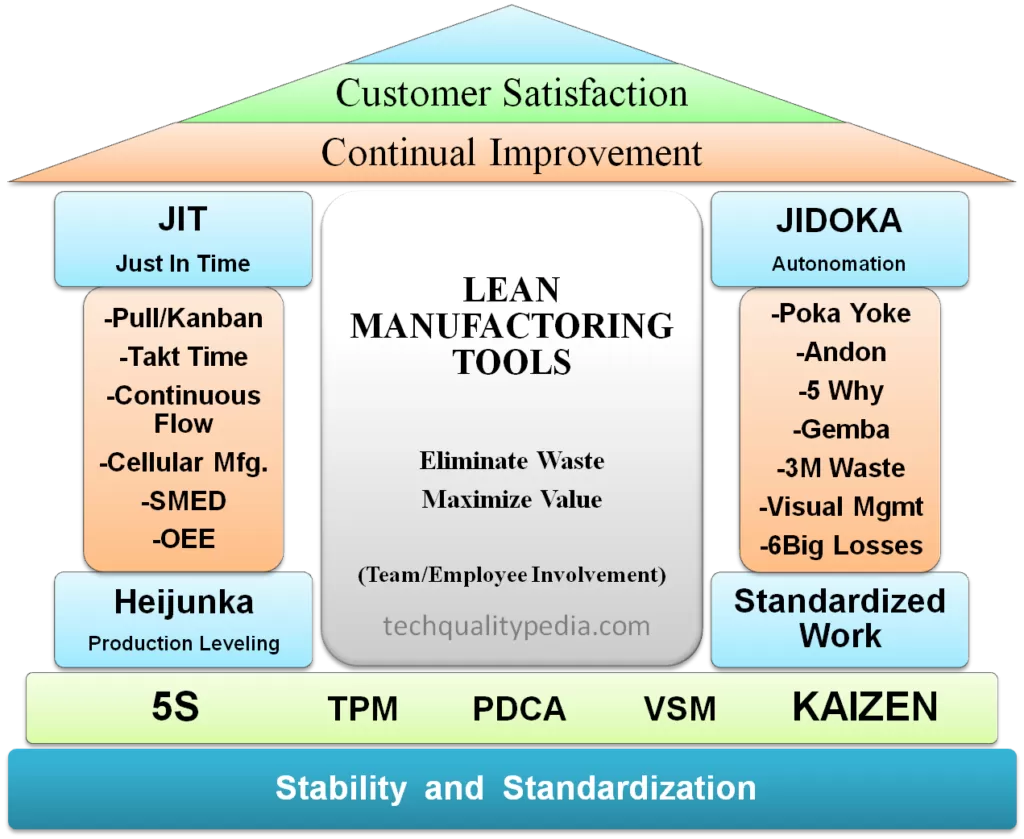According to Masaaki Imai (Founder of Kaizen Institute), Kaizen means continuous improvements in the daily working life, home life, personal life, and social life. And involving everyone for continuing improvement.
It is a Japanese word made by the combination of two words:
Kai – means to Modify or Change
Zen – means Good ( for the Better)
Therefore, Kaizen can be defined as the “change for better”.
Kaizen is one of the important tools of Lean Manufacturing and TQM.
Table of Contents
Kaizen Philosophy
Kaizen philosophy is developing a culture for people engagement in improving the organization through small-small continuous improvement in daily work rather than one large improvement at once. Kaizen’s belief is that the small-small improvements in large numbers at lower cost are generally better than some large improvements at a higher cost.
Kaizen Principle | Objective
The kaizen objective is the continuous improvement in the product and process quality by eliminating waste from the process or services by identifying values and involving everyone.
- Continuous improvement in product and process quality by identifying values.
- Eliminate Muda or Waste.
- Lower rejection/defects and cost.
- Increase Productivity.
- Promote Innovation.
- Increase worker’s morale and accountability through effective participation.
KAIZEN PROCESS
Kaizen event process generally follows Deming’s PDCA process approach. The seven-step approach for kaizen process implementation based on the PDCA cycle is:
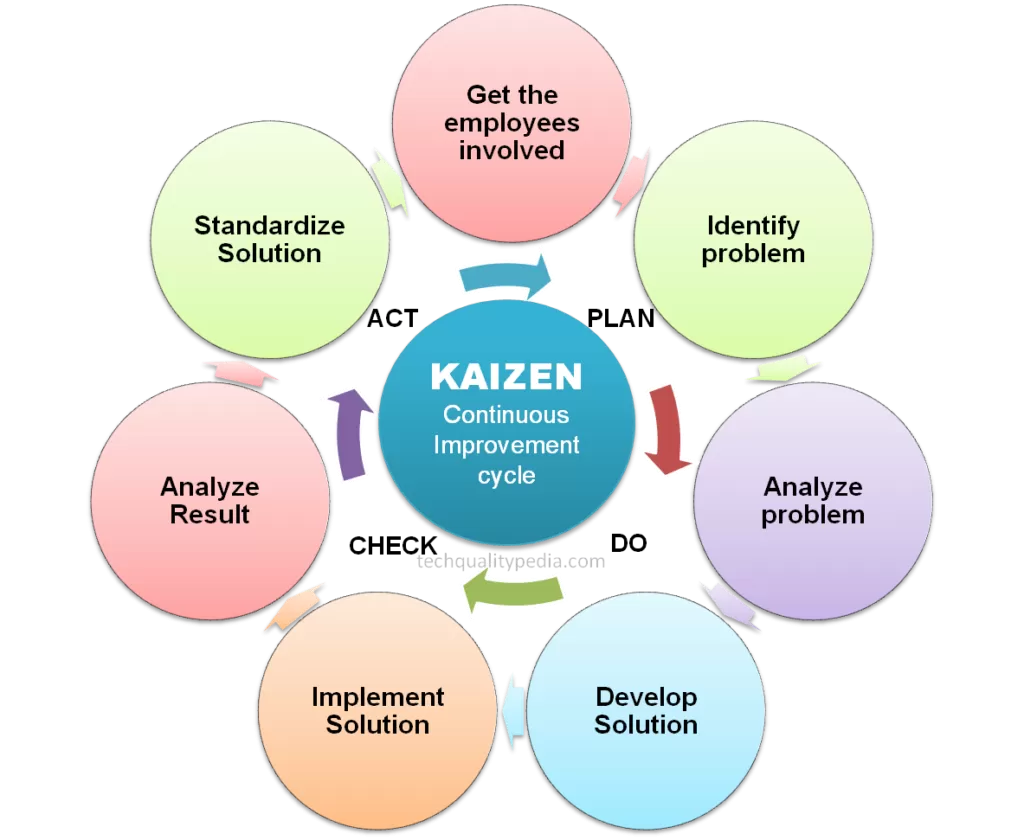
Get the workers involved: Involve the workers and get their ideas or suggestions through the kaizen suggestion system.
Identify the problem: Collect the list of ideas/suggestions in order to identify the issues or problems.
Analyze the problem: Analyze the problem by observing the present process/condition and investigate the probable root cause.
Develop the solution: Identify the alternate solutions/ideas and select the best solution after validating all identified solutions.
Implement solution: Implement the permanent solution/action against the real identified root cause.
Analyze the result: Monitor the effectiveness of the implemented solution.
Standardize the solution: If the result found effective then do the horizontal deployment of the implemented solution at other areas/workplaces/machines etc.
What is MUDA?
The operation/activity of an organization or manufacturing industries normally includes both value-added work and non-value added work. The non-value-added activities are called MUDA that leads to increase production costs.
- Operation= Value Added Work + Muda
- Value Added Work= Increase the value of the product
- Muda= Increase cost of the production

Strategies
Kaizen event strategies are:
- Elimination of the MUDA(Waste)-Seven types of waste.
- Teamwork: Train all employees/workers about kaizen & problem-solving tools.
- Communicate ideas throughout the organization’s hierarchy.
- Define clear leadership initiatives.
- Prioritizing problems.
- Create a culture to achieve perfection.
Identification process
The kaizen identification should be done as follows:
- Can this job be made more comfortable?
- Isn’t there a better method for this operation?
- Isn’t there a faster way of doing it?
- Isn’t there a safer way of doing this?
Implementation Practices
There are various kaizen implementation practices performed in an organization that is usually associated with the Lean Manufacturing tools, and principles, which include:
- Kaizen 5S.
- Deming’s PDCA approach (Plan-Do-Check-Act).
- VSM-Value Stream Mapping.
- Total Productive Maintenance-TPM.
- Why-Why Analysis or 5 Whys.
Kaizen Methods | Steps
There are three types of Kaizen method/steps:
- Kaizen by Elimination
- Kaizen by Reduction
- Kaizen by Change
See Kaizen’s examples below for more clarity.
Benefits of Kaizen
- To make the job or workplace:
- Easier
- Safer-reduce the chances of an accident
- More efficient
- More pleasant or comfortable
- Saves time
- Reduces cost of production
- Improve the product delivery
- Reduce the production lead time
Kaizen Examples
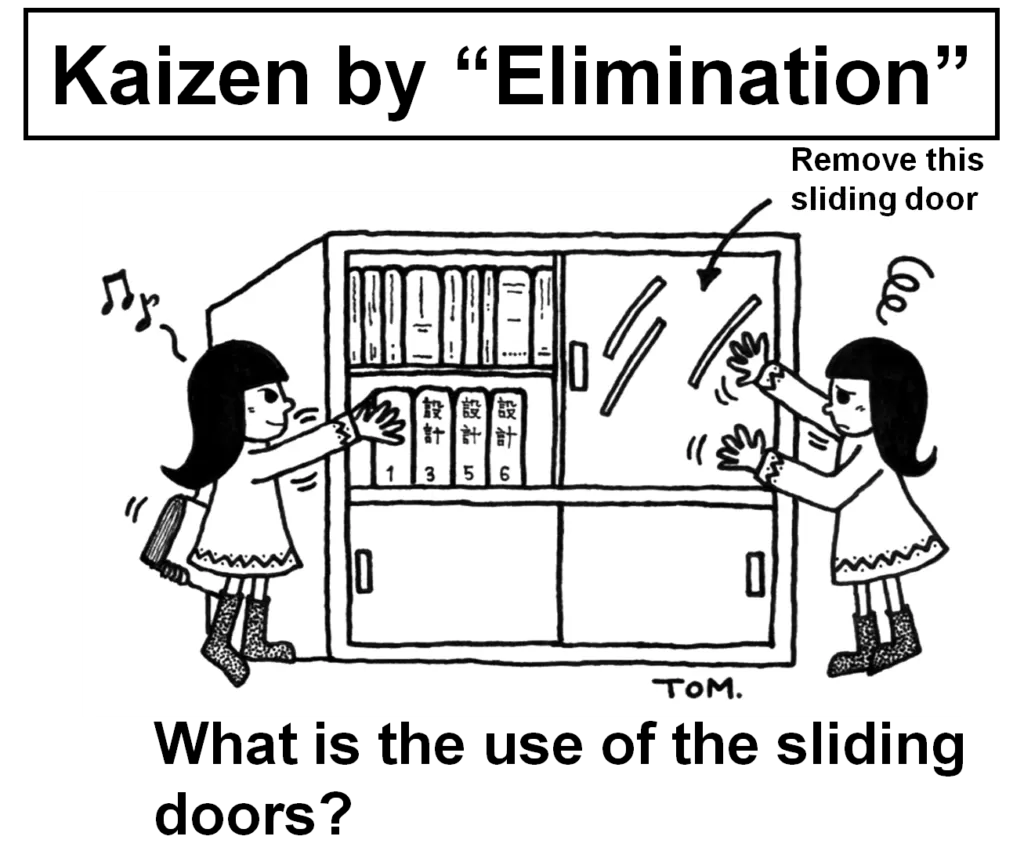
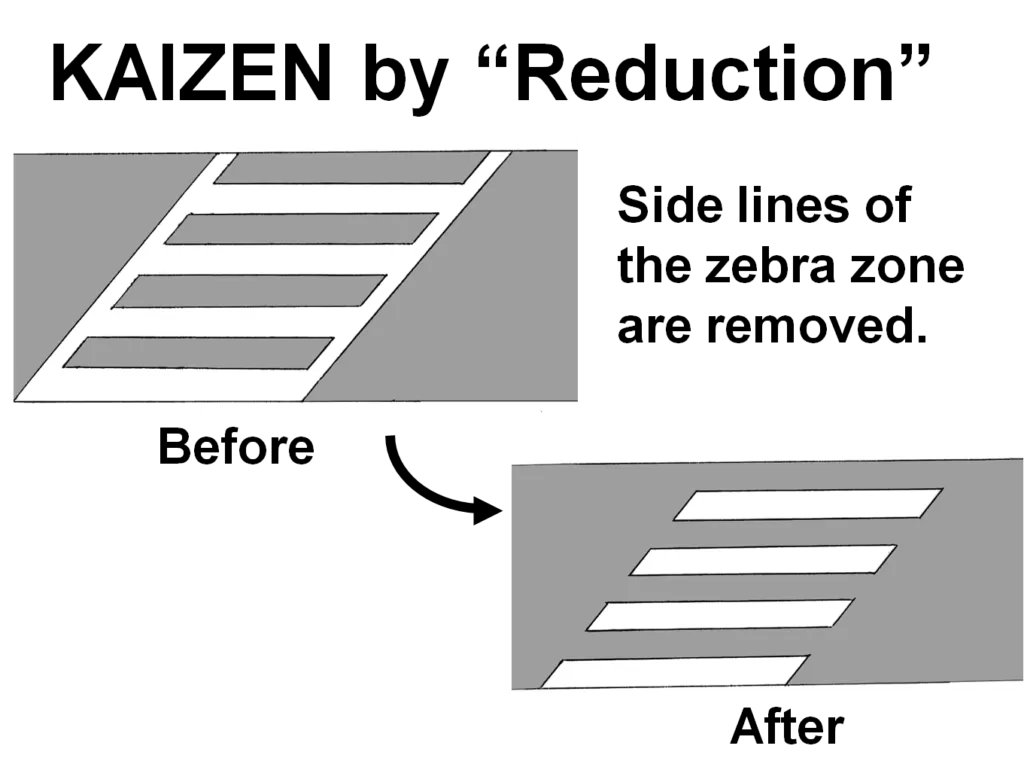
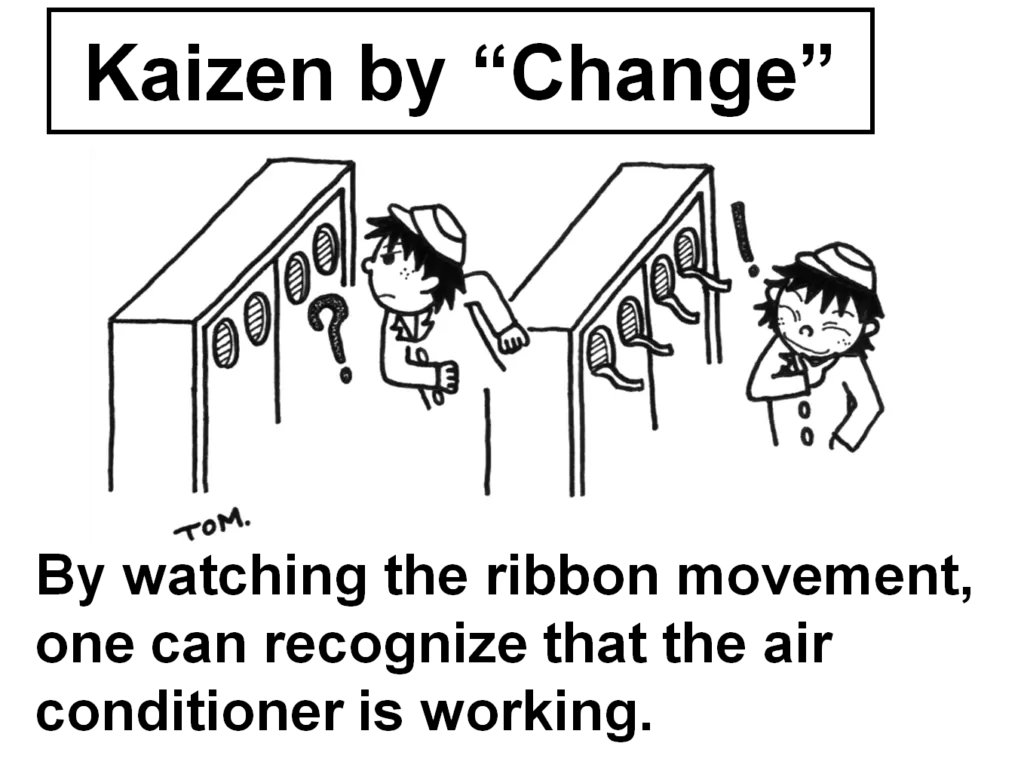

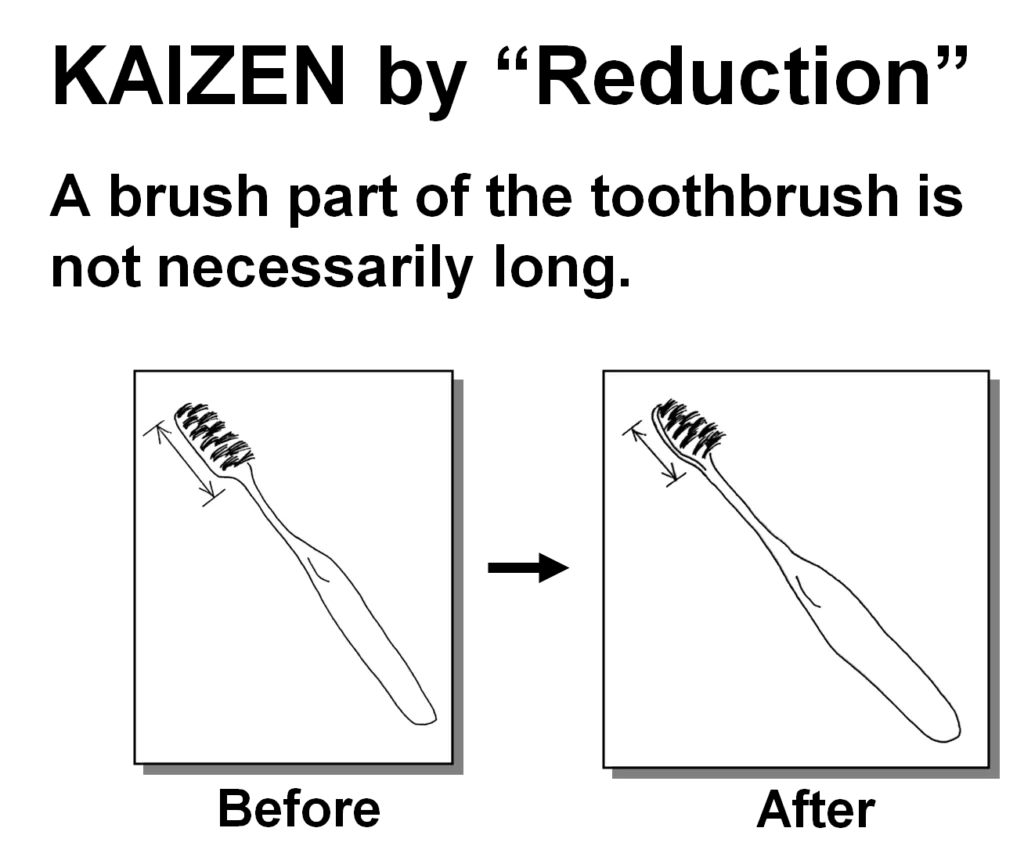
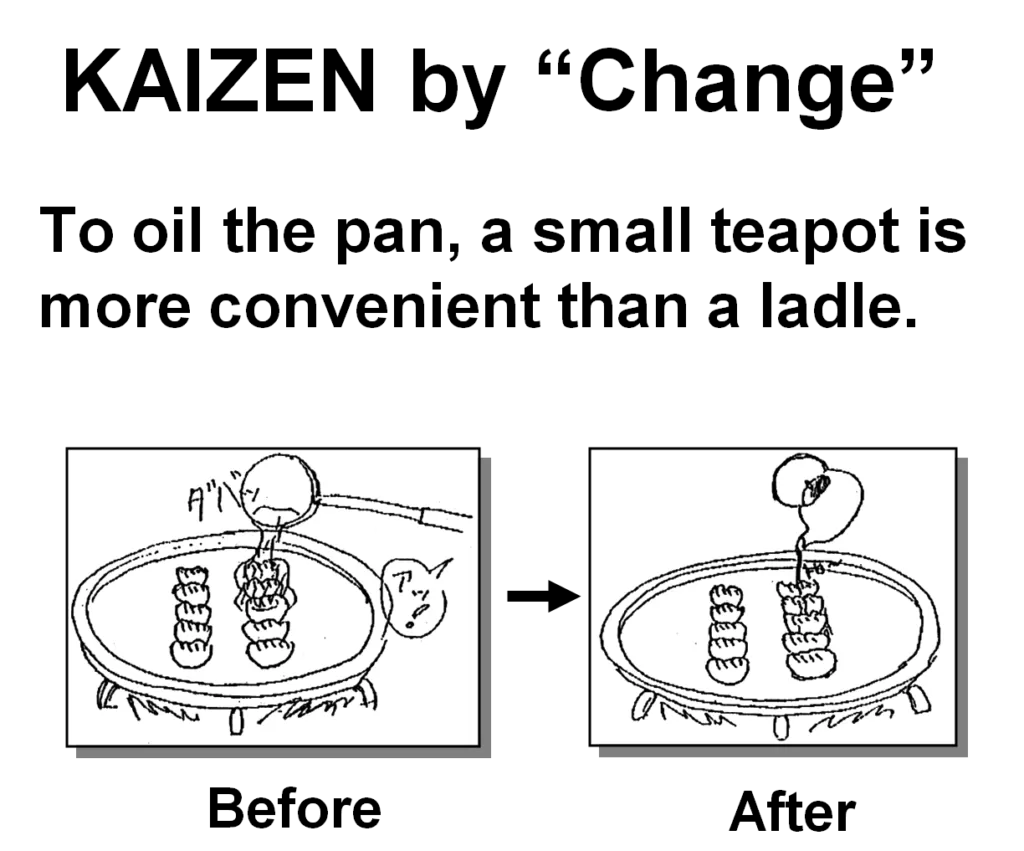
Kaizen Report | Format

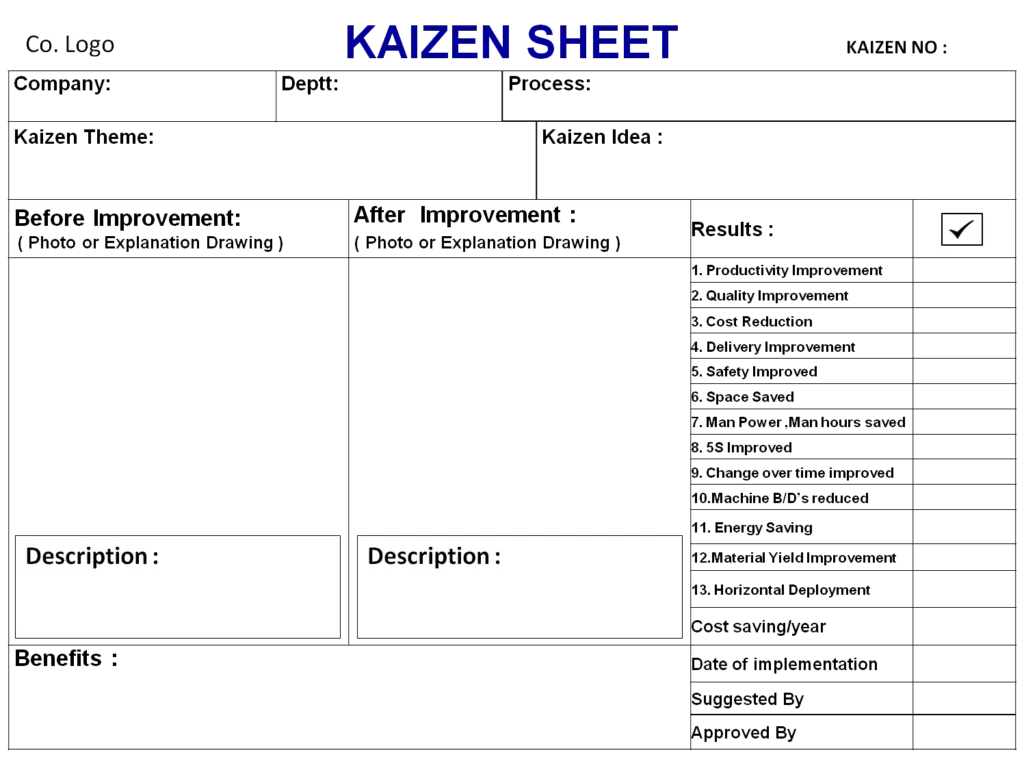
Related Articles

